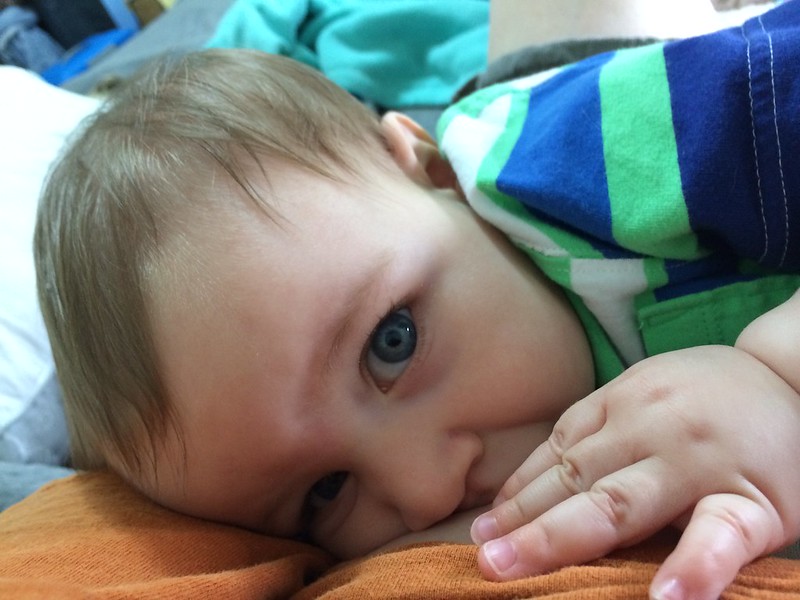We can no longer position worried moms as the front line of defense between their child’s health and the chemical industry. We need a government that regulates chemicals.

Last week, pandemic-weary parents were hit with more heavy news: A scientific study reported toxic per- and polyfluoroalkyl substances (PFAS) chemicals in milk from 50 Seattle area mothers. While none of the study participants lived in a known hotspot, each of the milk samples contained PFAS—which are known to impact the thyroid, immune system, reproductive system and are linked to several types of cancer.
How does this happen?
For the infants whose parents donated milk for the study, the story began decades before they were born, when PFAS were invented, giving rise to modern everyday items, such as cosmetics, fast food wrappers, cleaning products and more. Now, due to their incredible persistence, the chemicals are measured in the blood of nearly every American, including those who are pregnant.
PFAS pass through the placenta to reach the gestating fetus, and are measured in amniotic fluid (which is mostly water anyway). Our bodies are sponges for chemicals in our environment, not an armor against them. It is not surprising then, that PFAS and other chemical pollutants also make their way into nature’s first food: mothers’ milk.
For me, this story did not start with PFAS, but with a different chemical: polybrominated diphenyl ethers, or PBDEs. In 2003, I recruited 20 people for a first-ever study measuring PBDEs in milk. We too found the chemicals in everyone we tested.
Since then, I’ve had two kids and spent a total of one and a half years pregnant and three years nursing. Baby on hip, I lobbied to support bills to ban harmful chemicals from food, cosmetics and industrial uses. Epidemiologists built a national biomonitoring program to reveals the complex mixture of industrial chemicals in our bodies. Congress overhauled the Toxic Substances Control Act, giving the Environmental Protection Agency (EPA) more power to regulate harmful chemicals. Most recently, Sierra Club and activist partners sued the EPA to force it to consider chemical exposures for people who are pregnant, who work with chemicals, or for tribal communities who eat highly contaminated wild foods.
The year we found PBDEs in breast milk, they were removed from commerce, and over decades the concentrations in Americans’ bodies have declined. But it isn’t enough.
The chemical industry is slippery like Teflon. It substituted PBDEs with other harmful replacement chemicals in baby furniture, nap mats, car seats and foam furniture. It has phased out two harmful PFAS, but literally thousands of others are still in use and PFAS are found in things like burger wrappers, dental floss, makeup, furniture, compostable foodware, and waterproof clothing.
Savvy shopping isn’t enough, as chemicals aren’t listed on product labels, nor are uses disclosed to the government. Scientists are required to be detectives too, looking for clues, or even stumbling upon chemical crime scenes by accident.
The findings in last week’s study are an affront to parents, mostly moms, who labor to provide their kids with a healthy home and diet. The fact is that despite this worrisome news, breast milk remains the healthiest way to feed a baby. It has antibodies to fight COVID and other infectious diseases, irreplaceable healthy fats, and its complex flavors prime kids’ palettes to enjoy a varied diet. But nursing is hard work, and stark demographic differences in nursing rates for Black and Indigenous moms, as well as lower-income moms of all races, underscore the privilege and external support it takes to breastfeed their baby.
There is a valid concern that sensational headlines about chemicals in breast milk do more harm than good, as the news may be scary for new moms. I get it. But you know what is “alarming”? That it is still legal to put PFAS in food wrappers and raincoats, dump them in rivers and spew them from smoke stacks.
Here is one more piece of not-good news: PFAS may make it harder to nurse. Studies in highly exposed communities find that infants are weaned earlier when moms have higher exposures to the chemicals. The hypothesis is that PFAS mimic hormones and alter breast development. This is supported by evidence from laboratory studies that PFAS interfere with breast development and with weight gain, presumably due to issues with lactation.
I am fed up with the myriad of news stories, especially those targeting women, that frame healthy living as a consumer choice and an individual responsibility. As residents of this increasingly polluted planet, we do not have the choice to avoid harmful chemicals in our daily diet. We are not responsible for the mess.
We can no longer position worried moms as the front line of defense between their child’s health and the chemical industry. We need a government that regulates chemicals. It is time to end the unnecessary use of toxic PFAS chemicals and other pervasive chemicals that harm our health.
Up next:





